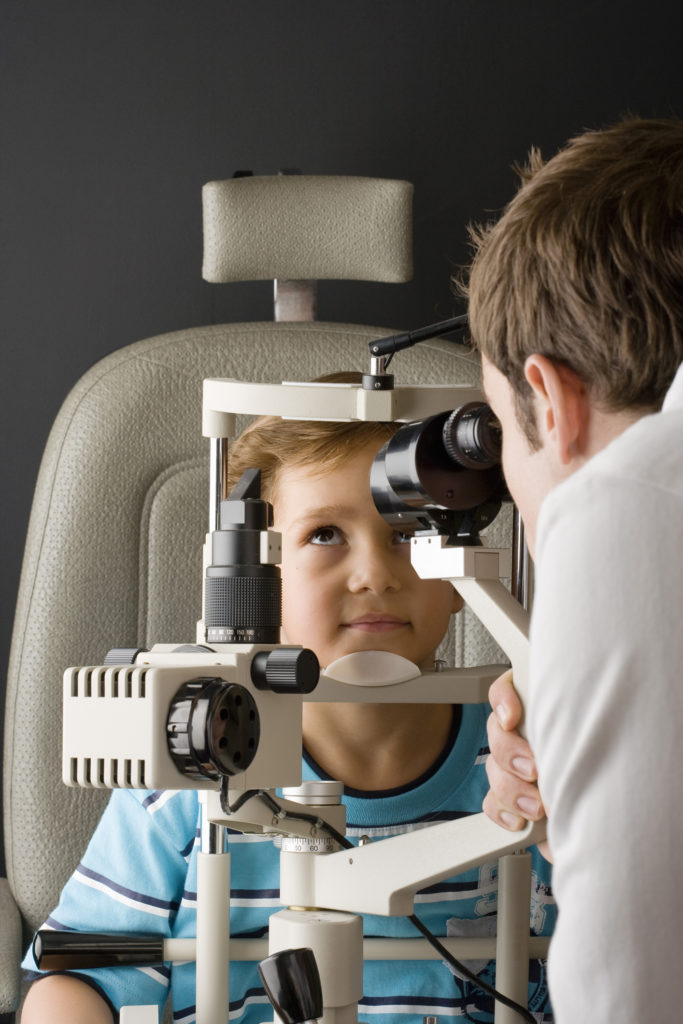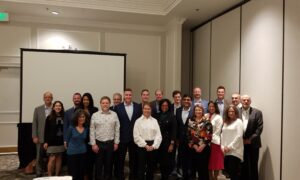March 1, 2020
By Raul A. Trillo, MD, MBA
 Imagine waking up unable to see anything more than a few inches from your face and knowing that is the best your vision will ever be. Wouldn’t that be frightening and debilitating? If there had been treatments available to slow your vision loss, wouldn’t you have wanted to have known about them?
Imagine waking up unable to see anything more than a few inches from your face and knowing that is the best your vision will ever be. Wouldn’t that be frightening and debilitating? If there had been treatments available to slow your vision loss, wouldn’t you have wanted to have known about them?
As a parent, if your child were at risk for blindness due to glaucoma, cataracts, maculopathy or retinal detachment later in life, wouldn’t you want your pediatrician, family practitioner, ophthalmologist or optometrist to share information with you regarding treatment approaches and lifestyle choices that could help preserve your child’s vision?
This might sound a bit dramatic, but myopia is a highly prevalent and silent disease occurring during a child’s eye development that can lead to a lifetime of poor vision. The Brien Holden Vision Institute estimates that half the world’s population could have myopia by 2050 and that 1 billion could develop high myopia, placing them at the greatest risk for the most devastating consequences related to this disease (glaucoma, cataracts, myopic maculopathy and retinal detachment). The time to act is now.
Most of us are born hyperopic or farsighted, and as our eyes grow during normal development we become emmetropic and without significant refractive error. During this critical period of eye development, when we are progressing as young children and adolescents, with myopia something goes wrong. The eye grows disproportionately too long, the axial length is extended and myopia occurs.
There are many theories regarding the causes, but most likely a combination of genetic predispositions and environmental factors adversely affect emmetropization.
The need to intervene during this critical period drives the importance and urgency to slow or stop myopia progression. Myopia progression is irreversible, so when this treatment window closes, the higher risk of vision loss remains for life. This is where the Global Myopia Awareness Coalition (GMAC) comes in and why I am so honored to participate in this very important effort.
GMAC is an industry group of leading eye care companies working to make parents, teachers, school nurses, health care providers and other key stakeholders aware of the growing public health threat posed by myopia. As a founding member company, Nevakar allowed me the opportunity to serve on GMAC’s board by creating time for me and committing other resources to this effort. Nevakar works with our partner companies to significantly move the needle on myopia awareness and help patients now as new treatments continue to be developed and tested.
GMAC is organized under the World Council of Optometry (WCO), and includes the following member companies which are leaders in the eye care industry: Alcon, CooperVision, Essilor, Euclid, Hoya, Review of Myopia Management, Menicon, Nevakar, Oculus, SightGlass Vision, Sydnexis, SynergEyes and Visioneering Technologies.
As a physician who early on cared for patients on a daily basis in clinical practice and has since accumulated over 25 years of health care industry experience, I chose to leave direct patient care to have a more significant impact on patients globally through the introduction of new drugs and medical devices. Making advances in myopia treatment represents an incredible opportunity to help children who later in life could suffer devastating visual consequences. My hope is that Nevakar’s novel pharmaceutical treatment under clinical development can one day soon help these patients as well.
However, it all starts with awareness and education…at home, in schools and across health care treatment settings. Some actions and interventions can be started today, and GMAC can play a critical role in ensuring health care professionals are talking to parents about these. Of course, there are dedicated and highly competent professionals in myopia treatment centers such as Treehouse Eyes, but there are other, more general clinicians such as pediatricians, family practitioners, ophthalmologists and optometrists who must also actively engage with parents and children. Early detection and ongoing monitoring are key. Limiting screen time, spending more time outdoors and reducing near visual work should be part of every health check conversation. The ability to explain available treatment options such as orthokeratology or the MiSight 1 day soft contact lens and understand the many other device and pharmaceutical options in development are essential responsibilities for every clinician.
It is an exciting time for the field of myopia treatment and prevention because so much good can result, and many lives can be improved if our efforts are successful. The time is now to make sure everyone understands this disease, its potential consequences and the interventions available to help children before the treatment window closes. Through the efforts of GMAC and its member companies, I am very optimistic we can have a significant impact and advance this critical effort.

Raul A. Trillo, MD, MBA, is the chief commercial officer at Nevakar, a specialty pharmaceutical company focused on developing innovative ophthalmic products for refractive errors and novel hospital-based injectables in critical care.













